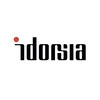Clazosentan in Preventing the Occurrence of Cerebral Vasospasm Following an Aneurysmal Subarachnoid Hemorrhage (aSAH) (CONSCIOUS-1)
Aneurysmal Subarachnoid Hemorrhage

About this trial
This is an interventional prevention trial for Aneurysmal Subarachnoid Hemorrhage focused on measuring delayed ischemic neurological deficits (DIND), vasospasm, clazosentan, cerebral vasospasm, computer tomography scan (CT scan), digital subtraction angiography (DSA), endothelin A receptor, aneurysmal subarachnoid hemorrhage (aSAH)
Eligibility Criteria
Inclusion criteria: Male or female patients aged 18 to 70 years (inclusive) or male patients aged 45 to 70 (inclusive) or males aged 18 to 44 (inclusive) who are surgically or naturally sterile or can personally sign the core Informed Consent Patients with a ruptured saccular aneurysm that has been confirmed by digital subtraction angiography (DSA) and for which clipping or coiling (endovascular obliteration) is possible. Patients with a diffuse or localized thick subarachnoid clot on baseline CT scan. Measurements defining clot thickness and extension are as follows: Diffuse: Clot with long axis >= 20 mm, or any clot if present in both hemispheres Localized: Clot with long axis < 20 mm Thick: Clot with short axis >= 4 mm Thin: Clot with short axis < 4 mm Start of screening within 48 hours post onset of aSAH clinical symptoms World Federation of Neurological Surgeons (WFNS) Grades I-IV, and those Grade V patients who improve to Grade IV or less after ventriculostomy In the case of multiple aneurysms, the aneurysm that has ruptured is identified with a high likelihood during the screening period Women of childbearing potential with pre-treatment negative serum pregnancy test Patient is able to start the study drug infusion within 56 hours after the rupture of the aneurysm, and the procedure option (clipping or coiling) must either be started within a maximum of 12 hours after the start of study drug infusion or should have been already performed Written informed consent to participate in the study must be obtained from the patient or a legal representative prior to initiation of any study-related procedure and enrollment Exclusion criteria: Patients with SAH due to other causes (e.g., trauma or rupture of fusiform or mycotic aneurysms) Patients with intraventricular or intracerebral blood, in the absence of subarachnoid blood No visualized clot or presence of only localized thin clot on CT (< 20 mm x 4 mm) Presence of any degree of cerebral vasospasm on screening angiogram Patients with hypotension (systolic blood pressure (SBP) <=90 mmHg) refractory to fluid therapy Patients with neurogenic pulmonary edema or severe cardiac failure requiring inotropic support Any severe or unstable concomitant condition or disease (e.g., known significant neurological deficit, cancer, hematological, or coronary disease), or chronic condition (e.g., psychiatric disorder) which, in the opinion of the Investigator, would affect the assessment of the safety or efficacy of the study drug Advanced kidney and/or liver disease, as defined by plasma creatinine >=2 mg/dl (177 micromol/l) and/or total bilirubin > 3 mg/dl (51.3 micromol/l) Any known or CT evidence of previous major cerebral damage (e.g., stroke [> 2 cm], traumatic brain injury [> 2 cm], previously treated cerebral aneurysm, arterial venous malformation [AVM]), or other preexisting cerebrovascular disorders, which may affect accurate diagnosis and evaluation of SAH Patients receiving prophylactic i.v. nimodipine or i.v. nicardipine. If present, these must be stopped at least 4 hours prior to initiation of the study treatment Patients who have received thrombolytics, including intracisternal administration, intrathecal treatments and therapeutic hypothermia for treatment of the SAH Patients who have received an investigational product within 28 days prior to randomization Patients with current alcohol or drug abuse or dependence
Sites / Locations
- Dr. Giuseppe Lanzino
- Dr. Horner
- Dr. Aldrich
- Dr. Ogilvy
- Dr. Zuccarello
- Dr. Woo
- Dr. Rosenwasser
- Dr. Zager
- Dr. George A. Lopez
- Dr. Bullock
- Dr. Wong
- Dr. Findlay
- Dr. Redekop
- Dr. Ferguson
- Dr. Bojanowski
- Dr. Fleetwood
Arms of the Study
Arm 1
Arm 2
Arm 3
Arm 4
Experimental
Experimental
Experimental
Placebo Comparator
Clazosentan 1 mg/h
Clazosentan 5 mg/h
Clazosentan 15 mg/h
Placebo
intravenous clazosentan at 1 mg/h starting within 56 hours maximum after aneurysm rupture and continuing until Day 14 post-aneurysm rupture
intravenous clazosentan at 5 mg/h starting within 56 hours maximum after aneurysm rupture and continuing until Day 14 post-aneurysm rupture
intravenous clazosentan at of 15 mg/h starting within 56 hours maximum after aneurysm rupture and continuing until Day 14 post-aneurysm rupture
intravenous placebo starting within 56 hours maximum after aneurysm rupture and continuing until Day 14 post-aneurysm rupture
Outcomes
Primary Outcome Measures
Secondary Outcome Measures
Full Information
1. Study Identification
2. Study Status
3. Sponsor/Collaborators
4. Oversight
5. Study Description
6. Conditions and Keywords
7. Study Design
8. Arms, Groups, and Interventions
10. Eligibility
12. IPD Sharing Statement
Learn more about this trial
